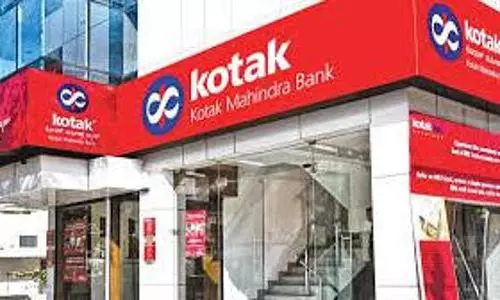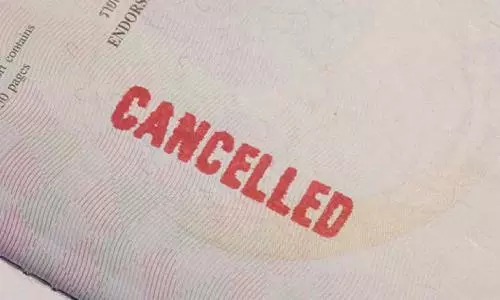
Battleground West Bengal may determine political battle for Delhi in 2019
text_fieldsThe 17th Lok Sabha election has started all over India amidst enthusiasm, skepticism and serious concern about the future of India. This election, according to many political analysts, is extremely crucial as the result may redefine India’s future, in terms of democracy and inclusiveness. This election will determine whether economic constraints take a back seat when religious sentiments are hyped for votes.
These concerns have a context: the last five years rule of BJP. A party came to power with absolute majority in the lower house and in just five years it has been successful in changing the mainstream political debate from development to dogmatism. Polarization has sharpened as communal divides are built among communities by political parties. The ruling party has openly highlighted its agenda of communal politics and promise of Hindu Rasthra. The main opposition, Indian National Congress (INC) is focusing on economic issues e.g. NYAY in manifesto but in a diplomatic fashion doing all that is possible to keep the majority vote bank happy too. Other centre-left parties are no exceptions.
In this larger backdrop of today’s political ecosystem of India, West Bengal politics needs to be contextualized. West Bengal is a critical battleground state in parliament election as it has the third largest share in Lok Sabha after Uttar Pradesh (80) and Maharashtra (48). Applying the principle of diminishing return in politics, it could be safely concluded that the BJP-ruled states will see some decline of the party in number of seats this time, compared to 2014. BJP, which had bagged 71 seats in UP in 2014, is unlikely to repeat this high success in the changing political scenario and following the formation of the BSP-SP alliance. Even MP, Chhattisgarh and Rajasthan would not be extremely rewarding for BJP, in other words BJP is in search of compensations (to cover up setbacks in Hindi belt) from other states. Hence the focus on the East and a mega focus on West Bengal, where it has currently only two MPs.
2014 LS Election Results in Bengal
| Party | Vote share % | Seats won | Variation |
| All India Trinamul Congress (AITC) | 39.05% | 34 | +15 |
| Communist Party of India (Marxist) CPI-M | 29.71% | 2 | -13 |
| Bharatiya Janata Party (BJP) | 17.02% | 2 | +1 |
| Indian National Congress (INC) | 9.58% | 4 | -2 |
Source: Wikipedia
AITC was clearly ahead of all parties in 2014, followed by CPM. But the surprise was BJP’s emergence and vote share of 17% which was more than double that of 2009. CPM’s vote fell by 10 % points while for the Congress, it came down to 9.7 % in 2014 from 13.5 % in 2009.
If we look at Bengal’s Panchayat election results 2018 (keeping aside controversies, and acknowledging violence), the vote share once again reaffirms the growing influence of BJP among commons.
In Panchayat election BJP performed significantly better than CPM and Congress and its own performance in 2013. While the CPM came down to one Zila Parishad seat from 213 in 2013, BJP went from zero in the last election to 22 in 2018. BJP has no doubt emerged as the second largest party already in Bengal politics.
This picture may look shocking, but not surprising given the collapse of left parties in the state, erosion of left cadre base (to the benefit of AITC & later of BJP) and pan-India emergence of hyper-nationalism in politics, mirroring the global trend of rise of nationalism in politics. Many analysts interpret this trend as a global failure/crisis of capitalism/neo-liberalism and the constant push of war economy. However, when we go to the grassroots, voters do not necessarily think in global terms. The pertinent question is: what makes BJP appealing to common voters of West Bengal and how will other parties fight back the saffron surge? While there is no one answer to these questions, some prominent factors could be mentioned, which would clarify the not-so-mysterious rise of BJP and future of other parties in Bengal.
The first reason is tied with the partition history of Bengal. Soon after partition and during Bangladesh Liberation war, many Hindu Bangladeshi immigrants crossed the border and settled in Bengal. Thus, Bengal was always a fertile ground for the Hindu right-wing forces to spread their influence. All political parties used this group as vote bank, just the way they used minorities of Bengal. However, in earlier days left parties developed a good base among the Hindu immigrants and helped them to rehabilitate socially and economically thus keeping RSS at bay. There was not much social or political space for communal discourse, neither was such discourse instigated, encouraged by the ruling party in Bengal. Thus, the majoritarian communalism, though it had always existed, was dormant.
With erosion of a cadre-based left party, the vacuum is filled by another cadre-based party i.e. BJP. The RSS sakhas have mushroomed all over the state since 2015 and in the last five years, Bengal experienced a surge of communal tensions and hatred. Celebration of Ram Navami by organising armed processions (often marching through minority areas), mushrooming growth of Ganesh Puja and Hanuman Puja - all of these which in fact were never popular in Bengal as festivals, suddenly increased and gave a push to religious polarisation. The state saw a series of communal disturbances in places like Asansol, Kharagpur, Basirhat and Dhulagarh. So West Bengal failed to escape the hate wave that swept all over India. The Bengali culture has given way to Hindi belt culture, partly owing to increase in the size of non-Bengali population, allegedly through a systematic planning of demographic manipulation. At least in pockets where non-Bengali population is high, BJP has gained good ground. Surprisingly BJP has also gained ground in the tribal belt. Despite Chief Ministers’ several flagship programmes for Jangal Mahal, the tribal vote bank largely deserted AITC. BJP is also targeting the scheduled caste vote bank of AITC by hobnobbing with religious leaders of those communities in recent times. At the beginning rise of BJP was convenient for ruling TAITC as the worst sufferer was Left and INC. With time BJP has emerged as the main opponent of AITC and now the party in power in Bengal trying to find ways to fight back saffron wave and even called for Grand Alliance at centre.
Another interesting point is the fact that significant percentage of urban voters are middle class Bengali people, for whom BJP epitomizes Hinduism and that is enough. During a casual conversation, a banker friend of mine recently told me that he would support BJP because it is the Hindu party. He is not at all happy with BJP’s performance on any other fronts but he can relate to the Hindu appeal of BJP. No matter how naïve it sounds, this one liner captures the mindset of millions of voters in Bengal. In particular, Hindu Bangladeshi immigrants (now settled in India with proper papers) perceive BJP as their party which can ‘teach’ their perpetrators (though in Bangladesh, for them all Muslims are same) a lesson.
AITC too has tried to play the politics of appeasement at different times. The much-debated monthly allowances to Imams and Muazzins created deep resentment among the Hindu middle-class against the government's "selective generosity" no matter how baseless was the accusation (the stipend is given from Wakf board & not by the government directly). Some other steps taken by the ruling govt in Bengal, partly in public interest, to maintain law and order and partly to appease majority voters backfired. Durga idol immersion and Muharram date clashed and the govt sincerely tried to uphold law and order and to avoid any communal tension in an already charged political environment. It imposed some restrictions but BJP successfully projected the move as the anti-puja position of Trinamul Congress (AITC). The decision to give donations to Durga puja committees backfired too as secular people of the state did not take this unprecedented move kindly. The matter landed in the court. AITC’s biggest weakness is lack of strong organizational structure and trained cadre base. It has all the limitations of a one-person dependent party.
As BJP has emerged slowly but steadily in Bengal politics, many front-line AITC leaders left the party and joined BJP, being frustrated in AITC, allured by prizes offered or bullied by consequences. This trend of joining the saffron brigade started with Mukul Roy, a former AITC leader and once very close to Mamata Banerjee. Gradually Trinamool MPs Saumitra Khan, Anupam Hazra, the party's four-time legislator Arjun Singh also joined BJP along with their support base. Mukul Roy, being a skilful politician, successfully roped in Congress MLA Dulal Bar, Khagen Murmu of CPI-M, and Bharati Ghosh, a known retired IPS officer (who was once close to Mamata Banerjee) into saffron camp.
Another significant factor in West Bengal election is political alliances between parties or lack of it. This time, though CPM and INC have not formally announced any alliance, both parties have agreed to play friendly contests in a few seats. Hence CPM has not fielded candidates in some high-profile Congress seats and vice versa. Going by past history of the assembly election, it can be concluded that the result will not be in favour of CPM. Interestingly, CPM’s left allies have refused to go for any kind of informal understanding with Congress in 2019 and they have fielded their candidates separately. This will lead to more vote split and lesser chance of gain for left brigade. There is limited effort of the Left and the Congress to expand their presence on the ground in the past few years. In fact, both the parties lost several opportunities to start a people’s movement against BJP, particularly on demonetisaton or agriculture distress issues. But they remained low profile and devoted their full energy to criticize only AITC in the state, at times even more than BJP. On the other hand, AITC has been visible and active and the BJP has clearly made the state an important focus of its attention with both the party president and the prime minister as well as start campaigners spending considerable time in addressing public rallies and stimulating party cadres.
The performance of the state government will surely be one determining factor in 2019. A recent survey done by Association for Democratic Reforms on ‘Governance Issues and Voters Behavior’ brought interesting insights. The West Bengal Survey Report 2018 (part of the nationwide survey) revealed that both rural and urban voters are unhappy with the performance of the state government. While rural voters prioritized Agriculture subsidy, MSP and infrastructure as key issues; urban voters highlighted employment, pollution and traffic congestion as top three priorities. And in all six issues performance of the state government was rated below average (Though, the same is true or even worse for central government). Despite tall claims of the government, agrarian sector of the state is suffering from poor infrastructure and investment. In urban, semi urban areas, unemployment is a major issue and this time there would be a significant percentage of first-time voters, for whom employment issue is very crucial.
It may be mentioned here that the same survey has revealed that people (both urban and rural) are comparatively happy with the state government’s performance on women security, public transport, primary education and hospital services and law and order. And BJP was rated extremely poor all over India.
The survey further revealed that more than 45% of voters in West Bengal considered the Chief Minister candidate to be very important while casting vote in any constituency. Clearly Mamata Banerjee is comfortably ahead here as no other party has been able to project a credible CM face.
Finally let us unpack the Fear factor. The state has 27.1% minority population as per the 2011 census and this is a significant vote bank. Apparently, there would not be much of a split in this vote bank, which nowadays has shifted to AITC from Left. This is because ‘Fear’ is a determining factor in 2019 election in Bengal. Money and muscle power are part and parcel of our electoral democracy. But this time 'fear' among minorities is instilled by communal remarks/promises of BJP like introducing highly controversial NRC and delisting Muslims from citizenship, normalizing hate crimes, lynching, attempt to take out a Rath Yatra in the state (which was stopped in 2018 and 2019 with the court’s intervention but looming), mainstreaming communal hatred, reinforcing stereotypes against minorities and making minorities politically irrelevant etc. As a consequence, the sense of insecurity is palpable among minorities. On the other hand, fake news circulated via social media, biased propaganda of pliable media and hate speeches by political leaders have created an atmosphere of fear among majority too. The majority Hindus are afraid of minorities, as the stereotype that Muslims are terrorists and Muslims will soon outnumber Hindus in ‘Hindustan’ give life to the narrative ‘Hindu khatre mein hain’ (Hindus are in danger). The fear is therefore, another factor and perhaps the overwhelming factor that will guide this election, for the first-time post partition.
Who will win the race is a million-dollar question but apparently ground reports suggest a return of AITC and a significant vote percentage gain for BJP, at the cost of remaining left and Congress votes!
BJP may not be able to get a double digit in Bengal in 2019 but even a small increase in West Bengal will help the party at the Centre and it is surely making inroads for upcoming state election and it will not at all be surprising if BJP emerges as the second largest party in the coming assembly election in Bengal in 2021.























